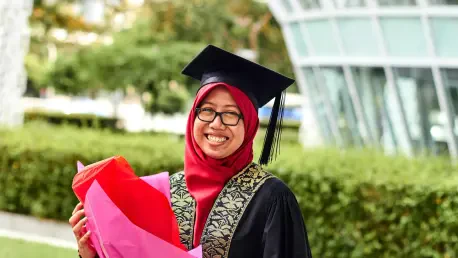In a significant stride toward educational equity, Malaysia has recently enacted a transformative piece of legislation that mandates secondary schooling for all children up to the age of 17, marking a pivotal shift from the previous requirement which only covered primary education for children aged six to 12. Championed by organizations like the Women’s Aid Organisation (WAO), this law is seen as a groundbreaking step to ensure education as a fundamental right, particularly for girls who have historically faced systemic barriers. With penalties for non-compliance, including fines and potential imprisonment, the policy underscores a firm commitment to keeping children in school. This development aligns with international standards, such as those set by the Convention on the Rights of the Child, and promises to reshape the social and economic landscape by prioritizing access to learning for all, regardless of gender or background.
Transformative Benefits for Girls’ Empowerment
The introduction of compulsory secondary education is poised to create profound changes in the lives of girls across Malaysia, offering them pathways to empowerment through enhanced skills and knowledge. Education at this level equips young women with critical thinking abilities, vocational training, and academic foundations that prepare them for diverse career opportunities. Beyond individual growth, this policy fosters confidence, enabling girls to engage more actively in civic matters and advocate for their rights. The WAO has highlighted how extended schooling serves as a powerful tool for breaking cycles of poverty, as educated girls are more likely to secure stable employment and contribute to their families’ economic stability. This shift not only transforms personal trajectories but also strengthens communities by creating a more skilled and informed workforce, paving the way for long-term societal progress.
Moreover, education acts as a protective shield against various forms of gender-based violence and exploitation that disproportionately affect girls. Staying in school longer reduces the likelihood of early marriage, a practice that often derails young women’s futures by limiting their autonomy and opportunities. The WAO emphasizes that girls in educational settings are less vulnerable to intimate partner violence and other forms of abuse, as schools provide safe environments and access to supportive resources. Additionally, this policy helps address deep-rooted inequalities by ensuring that girls from marginalized groups, including those in rural areas, Indigenous communities, and with disabilities, gain access to the same educational benefits as their peers. By creating a legal framework that prioritizes their inclusion, the law lays a foundation for reducing disparities and fostering a more equitable society where every girl has the chance to thrive.
Challenges and Strategies for Effective Implementation
While the new education law holds immense promise, its success hinges on overcoming significant barriers that could prevent girls from fully benefiting from this mandate. Financial constraints, lack of transportation, and limited access to digital resources remain substantial hurdles, especially for families in underserved regions. The WAO has urged the government to implement targeted interventions, such as subsidies or community-based programs, to address these issues and ensure that no child is excluded due to economic hardship. Without addressing these practical challenges, the policy risks falling short of its goal to provide universal access to secondary education. A collaborative approach involving local authorities, schools, and civil society organizations will be essential to identify and support at-risk populations, ensuring that the law translates into tangible outcomes for every girl.
Creating a safe and inclusive school environment is equally critical to realizing the potential of this legislative change. Schools must be equipped to handle issues like gender-based violence, sexual harassment, and bullying through clear protocols and well-trained staff. The WAO advocates for gender-sensitive training for educators and administrators to foster spaces where girls feel secure and valued. Beyond safety, there is a pressing need for robust monitoring systems to track enrollment, attendance, and dropout rates, particularly among vulnerable groups. Transparent reporting mechanisms will help identify gaps in implementation and ensure accountability at all levels. By addressing these systemic challenges with proactive measures, the government can maximize the law’s impact, ensuring that the benefits of education reach every corner of society and empower girls to build brighter futures.
Building a Legacy of Equality
Reflecting on the journey of this landmark legislation, the passage of the Education Amendment Bill stands as a testament to Malaysia’s commitment to gender equality and educational access. It marked a historic moment when policymakers and advocates united to prioritize the rights of children, especially girls, who had long faced barriers to learning. The rigorous debates and collaborative efforts that shaped the law underscored a shared vision of a more inclusive society. Support from organizations like the WAO amplified the call for change, ensuring that the voices of the most vulnerable were heard. As implementation unfolds, the focus shifts to actionable steps—strengthening infrastructure, enhancing safety measures, and monitoring progress—to sustain the momentum. Looking ahead, the emphasis must remain on continuous improvement and adaptation to emerging needs, ensuring that this policy becomes a cornerstone for future generations to build upon in their pursuit of equity and opportunity.









